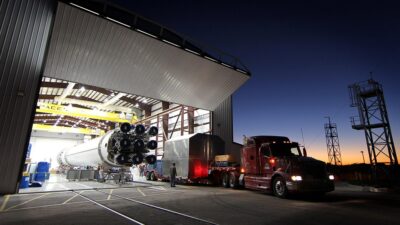As concerns over climate change intensify and the global demand for sustainable practices rises, many businesses are turning to fleet electrification as a viable solution. This transition not only aligns with environmental goals but also offers significant operational benefits. With advancements in battery technology, increasing electric vehicle (EV) availability, and supportive government policies, more companies are making the switch to electric vehicles for their fleets.
Understanding Fleet Electrification
Fleet electrification refers to the process of replacing conventional gasoline or diesel-powered vehicles with electric counterparts. This shift encompasses various types of vehicles, including delivery vans, buses, trucks, and even passenger cars, aimed at reducing greenhouse gas emissions and operational costs.
Key Drivers for Electrification
-
Environmental Responsibility: One of the most compelling reasons for businesses to adopt electric vehicles is the pressing need to reduce carbon footprints. Fleet electrification helps companies meet sustainability targets and fulfill corporate social responsibility (CSR) commitments. By switching to EVs, businesses can contribute to cleaner air and a healthier planet.
-
Cost Savings: While the upfront cost of electric vehicles can be higher than traditional vehicles, the long-term savings are significant. Electric vehicles generally have lower fuel and maintenance costs. With fewer moving parts, EVs require less frequent servicing, and electricity is often cheaper than gasoline or diesel, particularly in areas where renewable energy is prevalent.
-
Regulatory Incentives: Many governments are offering incentives to encourage fleet electrification. These can include tax credits, rebates, and grants aimed at offsetting the initial costs of EVs and charging infrastructure. Additionally, cities and states are increasingly implementing regulations that favor low-emission vehicles.
-
Technological Advancements: Improvements in battery technology have led to longer ranges and shorter charging times, making electric vehicles more practical for a wide range of applications. The development of fast-charging stations and home charging solutions has further facilitated the transition.
- Public Perception: With the rise in consumer awareness about sustainability, businesses that adopt electric fleets enhance their brand image. Customers often prefer companies that prioritize environmental stewardship and sustainability, making fleet electrification not just an operational decision but also a marketing one.
Success Stories
Several businesses across various industries serve as exemplars of successful fleet electrification:
-
UPS: As a logistics leader, UPS has committed to transitioning to electric delivery vehicles. The company has already deployed an impressive number of electric vans and is continually expanding its EV fleet, aiming for 25% of its fleet to be electric by 2025.
-
Amazon: Amazon has made substantial investments in electric delivery vans, collaborating with companies like Rivian to develop a custom electric delivery vehicle. The e-commerce giant aims to have 100,000 electric vans on the road by 2030, significantly reducing its carbon emissions.
- DHL: DHL has set ambitious goals for its fleet, striving to have 70% of its fleet electrified by 2030. The company has integrated electric vehicles into its operations, demonstrating the viability and efficiency of EVs in logistics.
Challenges to Consider
Despite the numerous benefits, businesses face several challenges when transitioning to electric fleets:
-
Initial Costs: The purchase price of electric vehicles can be a barrier, particularly for small and medium-sized businesses. However, as technology advances and production scales, prices are expected to decrease.
-
Charging Infrastructure: Establishing a reliable charging network is essential for successful fleet electrification. Companies need to invest in charging stations and consider the logistics of charging during off-hours to minimize downtime.
-
Range Anxiety: Although electric vehicle ranges have improved, businesses must plan their routes and operations to accommodate the range of their EVs, especially for long-distance travel.
- Workforce Training: Employees may require training to operate and maintain electric vehicles effectively. Adaptation to new technology can take time, but proper training can help accelerate this process.
The Future of Fleet Electrification
The future of fleet electrification is promising. As battery technology continues to improve and costs decline, more businesses are expected to make the switch to electric. With a growing emphasis on sustainability and reduced emissions, electric fleets are likely to become the standard in many industries.
In conclusion, fleet electrification represents a significant step toward a more sustainable and economically viable future for businesses. As more leaders recognize the benefits of electric vehicles, the transition will not only support corporate growth but also contribute to a healthier planet. The combination of environmental responsibility, cost savings, and positive public perception makes a compelling case for businesses to electrify their fleets today.



